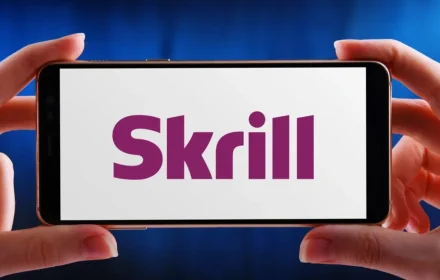While some players try their luck in craps, slots, and roulette, others delve into the hidden mathematics of the reward system on a gambling platform. What is a loyalty program in a casino? It’s not just a thank you for registering; it’s a calculated behavior model where every action brings tangible value.
Accrual algorithms, privilege levels, points, and cashback—all serve one goal: to build long-term relationships between the platform and the client in conditions of tough competition.

More Than Just a Gift: Why Casinos Implement Loyalty Programs
Online casinos record up to 70% of repeat transactions due to active use of reward schemes. What is a loyalty program in a casino? It’s a retention tool that works as well as CRM systems. The platform increases the player’s LTV, while the user benefits from their activity.
Business reasons for launching bonus systems:
- Customer retention in online casinos reduces acquisition costs by 3–4 times.
- Increase in average deposit by 18–25% among loyalty program participants.
- Reduction in time between visits to the platform by 30–40%.
Marketing in online gambling has long reimagined cashback and welcome bonuses—today, the focus is on personalization, analytics, and behavior prediction.
Mechanics of Loyalty Program: Levels, Points, Cashback
Participation in the reward system becomes available immediately after registration and identity verification. After each transaction, the platform awards points—the more deposits, the higher the level. The reward system is not a linear bonus scale but a multi-level engagement architecture.
Main components:
- Points are awarded for bets in slots, poker, roulette, blackjack, and other table games.
- Levels are based on the accumulated points—higher levels offer more favorable conditions.
- Cashback from 3% to 20% returns a portion of the lost funds.
- Bonuses include free spins, increased limits, exclusive offers.
- Personal manager available to high-level players.
- Privileges include expedited service, transaction processing, access to private tournaments.
Statistics show that players in the Silver and higher categories make 46% more deposits per month compared to newcomers.
How Loyalty Program Differs from VIP Club: Fine Line and High Stakes
At first glance, both models—reward system and VIP status—seem like variations of bonuses for activity. However, their nature is fundamentally different. The basic reward scheme is activated automatically: just register, confirm your identity—and the user gains access to an accumulative system with levels and bonuses.
While a VIP club is a closed space designed exclusively for those who show high activity, make regular deposits, and play for large sums.
If the reward program operates on the principle of point accumulation and gradual growth, VIP status is built on individual privileges, exclusive conditions, and a premium approach. Members receive extended transaction limits, invitations to exclusive tournaments, access to a club card, and priority service.
What a Loyalty Program in a Casino Means to a Player
It’s a system that brings real benefits to every active participant. The advantages are not in promises but in clear, measurable returns. Users convert points into bonuses, receive cashback, increase their status, and gain access to additional opportunities.
Benefits of a loyalty program for players include:
- Savings through cashback;
- Increased return rates;
- Free spins on slots;
- Participation in exclusive events;
- Personal deposit offers;
- Accelerated access to withdrawals and services.
Example: Upon reaching the Platinum level, a casino client deposits around 1000 euros monthly and receives 15% cashback, free spins on NetEnt and Red Tiger slots, direct participation in tournaments with a prize pool of 50,000 euros, and consultations from a personal manager.
How Casinos Utilize Loyalty in Marketing
Rewarding players is not just a compliment from the platform but a marketing tool integrated into the retention and acquisition strategy. From a marketer’s perspective, it’s a mechanism that optimizes the interaction funnel.
Functions:
- Attracting new audiences through promises of bonuses from the first bets.
- Retaining regular customers by increasing the value of each session.
- Competition—offering unique conditions to retain users.
- Personalization—adapting offers based on betting history, transaction frequency, favorite games (slots, poker, roulette, table games, blackjack).
Platforms using adaptive reward schemes see registration growth of up to 40%—significantly higher than projects without retention systems.
Signs of a Good Loyalty Program
An effective reward scheme is not limited to a one-time action upon the first account top-up—it covers the entire player journey. The working model builds a complete engagement cycle—from registration to VIP privileges.
What sets a functioning loyalty program apart from a regular bonus:

- Clear level system with transparent transition conditions.
- Continuous point accrual in any type of game—from dealer to slots.
- Regular cashback without hidden wagering requirements.
- Presence of a personal manager for VIP players.
- Ability to track progress through a club card or interface.
- Support for all popular formats: blackjack, poker, roulette, table games, slots.
- Activation of the program immediately after verification and first deposit.
Well-structured mechanics motivate players to repeat actions without pressure. The system turns each action into tangible value and maintains interest through real rewards.
Conclusions
A loyalty program is not just a bonus wrapper but a clear lever for managing attention, trust, and game duration. Players return where their activity is valued, behavior is tracked, and personalized conditions are offered. Fast service enhances the effect and helps retain the audience.
 en
en  de
de  ar
ar  es
es  hi
hi  fr
fr  nl
nl  ru
ru  it
it  pt
pt  el
el 










